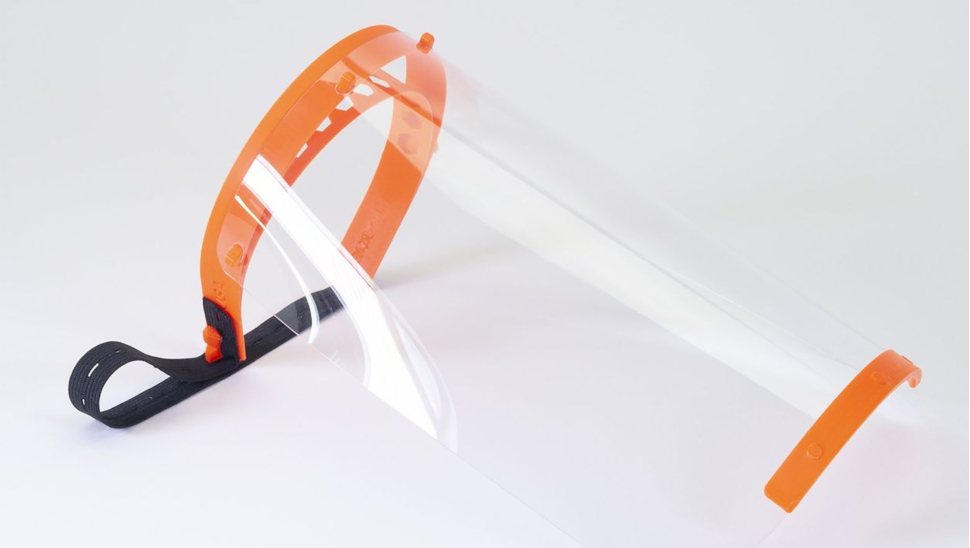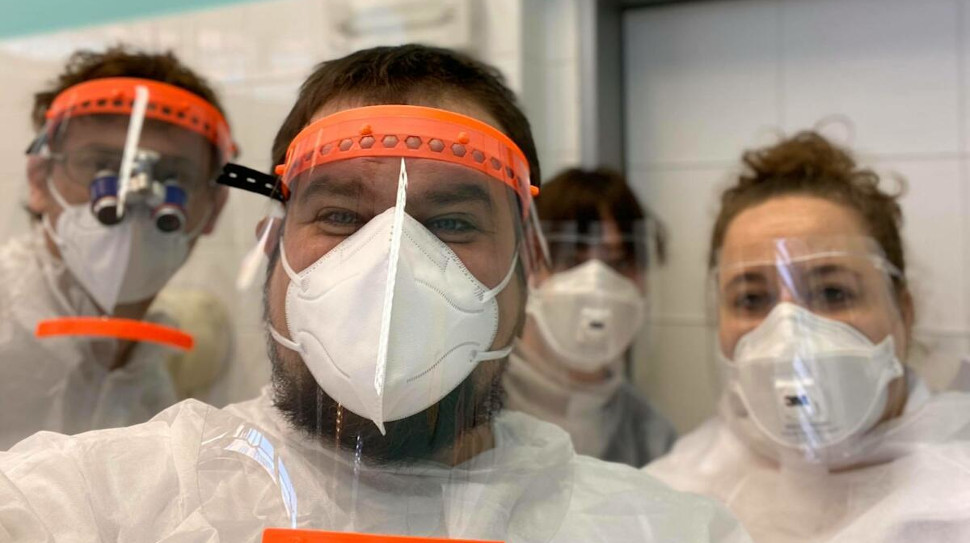This firm is 3D-printing medical face shields to protect frontline staff
From concept to manufacturing in just three days

Strategies to mitigate the effects of the ongoing pandemic are being implemented across the globe, from self-isolation to social distancing, but cases of the virus are still increasing. There is also a shortage of much needed medical equipment, such as ventilators, respirators and personal protection equipment.
In the Czech Republic, 3D print manufacturer Prusa Research is working with the national Health Ministry on an alternative solution: 3D-printed face shields for frontline medical staff.
TechRadar Pro spoke to founder Josef Prusa about how the firm’s face shields and the wider 3D print community can help in the ongoing battle against coronavirus.
- DIY 3D-printed face shields could help against Covid-19
- HP plans to fight Covid-19 with thousands of 3D printers
- 3D printing could prove a lifesaver in helping treat coronavirus
How did the collaboration with the Czech Ministry of Health come about?
“I got in touch with the Czech Ministry of Health and their virus team and they connected me to the doctors. After initial discussions, it quickly became apparent that a face shield would be the most valuable item to design and produce,” said Josef.
Based on original designs by Gizeh Trianam, the firm’s RC1 3D-printed face shields went from concept to manufacturing in just three days. The blueprints are now available to be printed by any member of the global desktop 3D print community.
In just a week, Prusa Research was able to produce more than 16,000 units, which have been distributed across the Czech Republic to doctors at checkpoints and testing facilities.
"It is the beauty of our position in the 3D community. Within a week, we were able to activate the community all around the world, so that is incredible; people in the states are already organising and making the shields.”
Are you a pro? Subscribe to our newsletter
Sign up to the TechRadar Pro newsletter to get all the top news, opinion, features and guidance your business needs to succeed!

How does the face shield assist health professionals?
The face shield is not classified as a medical device, but rather a protective shield that could be applied to any activity that requires face protection. The shield acts as an additional layer of defence for doctors and nurses working with affected patients, effectively creating a solid barrier.
The design was assessed by doctors to ensure that it was compatible with other PPE gear and offered sufficient protection. The prototype was manufactured and delivered to Czech Health Ministry experts for refinement before the design was finalised.
According to Josef, “[the face shield] is not a replacement for proper ventilation or goggles, but it is an additional layer. What we have heard from doctors and what is being confirmed from Hong Kong, is that face shields are improving safety, because you don't get the mechanical droplets when the patient coughs on the respirator or on the face."
While the shield is designed to be worn by health professionals with a facemask and goggles, it could also act as an effective barrier for anyone having to work with the public.
''Imagine being a cashier working in a shop, it just adds a layer of security. It won't protect you from the spores in the air, but it will protect you from the mechanical projection from someone else.”
What was the greatest design challenge you encountered?
The initial designs were open-source, so the primary design-related challenge was to further develop the blueprints to ensure the same product could be replicated on all desktop 3D printers.
"There were designs available and we are crediting the design that inspired our venture into this. But as we are the 3D printing community leaders, I wanted to do this properly, because people will be printing it. So we had better make sure the design is functional,” noted Josef.
However, he insists the most significant issue with the face shield isn't to do with design, but rather sterilisation. Most PPE used is single-use, but due to present supply limitations, this isn't feasible.
"I started working with two labs which are doing the testing for the government here, they have samples of the live Covid-19 virus. They are smearing the masks with the virus and they will be testing multiple ways to sterilise it,” he said.
"As the testing is not widely available, every person who makes personal protection equipment needs to act as though they use it. That is why we have the guidelines. The good part is that when you finish the print, the product is sterile because of the high printing temperatures, but when you are removing the print, you should use sterile gloves and put the print directly in a clear bag. This is about minimising risks."

Has the shield been tested and verified?
The design has been verified by the Czech Ministry of Health and has been judged effective. It has not yet received official certification, but rules have been temporarily relaxed due to the demand for PPE.
"[The face shield] has been verified by the health experts. In the time it would take to get a medical certification, I think the proper suppliers will be working again,” explained Josef.
“That is the beauty of 3D printing. You send the new file to the print farm and you have [almost instant] production. I expect that injection moulding companies will step up and in two weeks they will have moulds and can re-tool to make these."
What are the next steps for 3D printing and the fight against Covid-19?
According to Josef, the 3D print and open source communities could prove central to the fight against the novel coronavirus.
Prusa Research has launched a new feature on its site, called Groups. This enables 3D printer users worldwide to connect to their local communities, whether they use an original Prusa printer or another brand.
The idea is to provide 3D print enthusiasts with the ability to contribute to the fight against Covid-19 by producing shields for healthcare organisations in their localities. Doctors can also use the site to locate the closest community member who is able to supply masks.
"As the 3D community matures, we can show that we can do things properly. It helps to set people’s mindset when someone outside of the community sees what 3D printing can do and how useful a desktop 3D printer can be."
It remains to be seen whether 3D printed equipment can turn the tide in the fight against coronavirus, but it appears the 3D print community is ready and willing to try.
- Here's our list of the best 3D printers of 2020